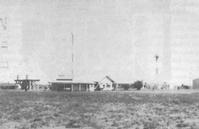


Radio Technical Officers
Foreword
Acknowledgements
Preface
Introduction
Chapter 1: The Early Years
Chapter 2: The Training School
Chapter 3: Equipment Installation Records
Chapter 4: The 'Techs' in Antarctica
Chapter 5: The 'Techs' Tell Their Stories
Trevor Donald Tells It All; Life in the Bureau from 1947 to 1989
Ray Clarke Looks Back
Some Memories from Ralph Bulloch
Peter Copland Works in Meteorological Electronics
Some Titbits from Dave Grainger
A Very Modest Tale from Alf Svensson
Adrian Porter Pulls No Punches
Jack Tait Recalls
Some Stories by Colourful Freddie Soutter
Some Snippets from Noel Barrett
Stephen CourbÍt Has His Penny Wworth
And a Flyspeck or Two from Lenny Dawson
Some Interesting Reminiscences from Jannes Keuken
Brief Stories from Phil Black
From Gloria West, Wife of the Late Bob West
The Life and Bureau Times of Graham Linnett
Tales Out of School from Bill Hite
Peter Copland on Cyclone Tracy
Peter Broughton Tells the Story of Maralinga
Appendix 1: 'Techs' Roll Call
Appendix 2: Trainee Intakes
Appendix 3: 'Techs' Who Have Served in the Antarctic Region
Appendix 4: Summary of Major Installation Projects
Appendix 5: Summary of Major Equipment Variously Installed at Sites and Maintained by Radio Technical Officers
Index
Search
Help
Contact us

Jack Tait Recalls
My initial technical training was undertaken during my time in the Royal Australian Navy from November 1950 to November 1956. This time included war service in Korean waters during 1953. After being discharged from the Navy I was employed as a radio technician at the DCA Rosehill workshops from January to May 1957. From May 1957 to October 1958 and January 1960 to February 1961 I was employed in the Territory of Papua New Guinea as a radio operator/technician with the Australasian Petroleum Company. I also worked as a radio technician with the Snowy Mountains Authority from April 1959 to January 1960.I commenced with the Bureau in December 1961, successfully completing the Observer (Radio) course in July 1962. After a year's service at Port Hedland, two years at Lae and just over two years at Townsville, in March 1968 I transferred to Forrest having earlier been promoted to Senior Observer (Radio). After six months at Forrest there were short stints at Giles and Hobart Airport before moving to Gladstone for a year in July 1969. I then applied for a posting to Giles and served there from July 1970 to January 1972, but with a break for recreation leave from late in 1970 until the middle of March 1971.

The position of Senior Observer (Radio) was reclassified to Senior Technician Radio and later, in May 1970, to Radio Technical Officer Grade 1. My observing functions ceased with my posting from Giles to Cairns. I was stationed at Cairns for almost a year from March 1972 before moving to Townsville where I remained for over 20 years until I retired in July 1994.
The WF44 and WF100 radars comprised the major equipment at Townsville. The WF44, located at Mount Stuart with its associated radarplex and microwave remoting system, was the primary weather watching radar. It had remote PPI, RHI (range height indicator) and photographic PPI displays at the Townsville Weather Service Office and was also connected to the Bureau's Rapic system. The WF100 radar was used for wind-finding, but it also had weather watching capability and was connected to Rapic.
There was quite a range of other equipment at Townsville. Additional to a number of standard items, the Racal TA83 SSB transmitters and associated RA7915 receivers, AWA UHF carphone transceivers for back-up operational control of the WF44 radar at Mount Stuart, Codan SSB transceiver and special facsimile equipment used for transmitting radar cyclone pictures to Brisbane are worthy of special mention.
Staff from Townsville serviced equipment at the meteorological offices at Mount Isa and Weipa, the EG&G AWS at Lucinda, three long-term pluviographs in the Reed River area and a Synchrotac anemometer at Bowen.
Although I did not receive formal training on some of the equipment serviced by the staff at Townsville, I applied myself to studying handbooks and instructions and gained the necessary experience in all aspects of their operation and maintenance. Valuable instruction was also given to me by Ben Thaggard, especially in regard to the EG&G AWS, Harris Laserfax, Rapic system and Alden facsimile. I did, though, attend short radar maintenance courses at the Bureau's Central Training School in Melbourne, on the WF44 in July and August 1977 and on the WF100 in March and April 1987.
 |
Bureau of Meteorology |  |
© Online Edition Australian Science and Technology Heritage Centre and Bureau of Meteorology 2001
Published by Australian Science and Technology Heritage Centre, using the Web Academic Resource Publisher
http://www.austehc.unimelb.edu.au/fam/1241.html